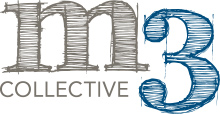Imagine your company creating a new product, hoping it would sell well. However, when it was launched, it didn’t sell as expected. You’re puzzled because you conducted market research, gathered ideas from different teams, and improved the product. You believe your product is even better than the competition, and you set a reasonable price.
How can you understand why the product isn’t selling well?
There are two effective ways to identify the problem and address it. You can hire someone to provide new ideas and guide your team on how to fix things. Alternatively, you can ask your team to delve deeper into the product’s development and sales strategies. They might discover the solution. The better choice depends on how much you want your team to be involved in finding and resolving the issue.
In this article, we’ll discuss what it means for your team to find the solution. We’ll explore when it’s truly important and how it can contribute to your company’s growth.
Your team knows the problem well
People often compare a company to a person. Bill Gates has likened a company’s internal communication to a human’s nervous system: everything must work well together. Jeff Bezos has said a company’s brand is like a person’s reputation; once it’s damaged, it’s hard to fix. Others compare cash flow to blood circulation, new talent to oxygen, and executive leadership to thinking ability. This metaphor is truly helpful.
Personal problems and finding solutions
It’s also useful when discussing problem-solving. When you have a personal problem, you can seek advice from everyone—friends, therapists, and your partner. However, in the end, you are the one who needs to find the solution. You are the one who will put the solution into action. You understand best what will happen because of your choice, and you are the one who will live with the results every day.
A personal approach to problem-solving
Similar to how you know yourself well, your team knows your company and the product you’re creating. They understand that product deeply—why certain choices were made during its development and which ideas didn’t work out. That also have a good sense of the company’s culture and how things happen in practice. They know what each person on the team is good at and whose support is needed to keep everything running smoothly. Since they see the big picture, your team is in a great position to conduct further research and find ways to change and improve the product so it sells as you hoped.
But it’s not only about what your team knows and can do. It’s also about respect. Your team comes to work every day and faces challenges within the company. These challenges are a significant part of their job, and they will be directly affected by the results and solutions. If they aren’t included in solving the problem, they might feel disconnected from the impact of their work. This feeling can lead to them not caring as much and even feeling unhappy.
Learning while you work
m3Collective recently teamed up with a large technology company that wanted to improve different parts of their business. Previously, the company had consulted various advisors, but the suggested changes didn’t last. Despite the advisors’ good ideas, the company continued to encounter the same problems.
Realising the need for a different approach, the company’s leadership decided to empower their team to solve problems. Approximately twenty employees, including managers, tech experts, marketers, and office staff, joined the ExperienceInnovation Course. Each person focused on problems related to their respective roles.
Unlocking Solutions through Collaborative Problem-Solving
They learned how to think about finding solutions that enhance things, and this helped them tackle problems that had persisted for a while. They collaborated to find practical and long-term ways to fix these issues. This resulted in positive outcomes like streamlining communication between departments and improving project management.
However, the impact of this training went beyond immediate outcomes. It equips employees with skills to address future problems. They learned an effective method for solving problems and successfully applied it within their team. This provided them with tools to handle other challenges too. Additionally, they felt trusted and supported by the company, knowing that the company believed in their growth.
So, what’s the main point? Seeking advice from an expert is a good idea in certain situations. If a problem requires a quick solution and your team is busy, seeking advice from an expert can be effective. Similarly, if your team lacks all the necessary skills for a particular project, seeking external help could be a wise choice.
However, if the answers you need involve understanding things your team is already investigating or exploring aspects your team is already working on, it might be better to consult your team first. Consider this: How well does your team understand the problem? How would they feel if you didn’t involve them in solving it? How would solving the problem themselves make them feel? Could this be an opportunity for your team to learn? Will your team face similar problems in the future?
By contemplating these factors, you might realise that your internal team is best suited to solve the problem. And you might discover that it’s more advantageous to leverage your team’s skills instead of seeking external assistance.













